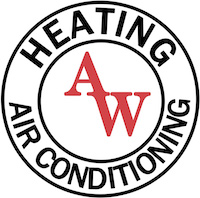
You shouldn’t have to give up comfort or empty your wallet to keep your home at the right temperature during summer weather.
But what is the ideal setting, exactly? We discuss advice from energy pros so you can select the best temp for your residence.
Here’s what we advise for the most energy-efficient setting for air conditioning in Lincoln.
Recommended Thermostat Settings for Summer
Most people find setting the thermostat at 72-73 degrees is most comfortable. However, if there’s a big difference between your indoor and exterior warmth, your electrical bills will be higher.
These are our suggestions based on the U.S. Department of Energy (DOE) and ENERGY STAR®.
While at home: 78 degrees. While that sounds hot, there are approaches you can keep your home refreshing without having the air conditioner running all the time.
Keeping windows and curtains shut during the day keeps cool air where it belongs—inside. Some window coverings, including honeycomb shades or plantation shutters, are designed to give extra insulation and enhanced energy conservation.
If you have ceiling fans in your home, the DOE says you can raise thermostat settings about 4 degrees warmer without compromising comfort. That’s because they freshen through a windchill effect. As they cool people, not areas, switch them off when you move from a room.
If 78 degrees still appears too hot on the surface, try running a test for approximately a week. Get started by increasing your temperature to 78 degrees while you’re at your residence. Then, gradually turn it down while using the suggestions above. You might be surprised at how refreshed you feel at a warmer temperature setting.
While away: 88 degrees. There’s no rationale for keeping the air conditioning running all day while your home is unoccupied. Moving the setting 7–10 degrees higher can save you anywhere from 5–15% on your air conditioning expenses, according to the DOE.
When you arrive home, don’t be tempted to set your thermostat below 78 to cool your home more quickly. This isn’t useful and often results in a more expensive air conditioner bill.
A programmable thermostat is a useful method to keep your temperature in check, but you need to set programs. If you don’t utilize programs, you risk forgetting to change the set temperature when you go.
If you’re looking for a convenient remedy, think over installing a smart thermostat. This thermostat links with your phone, so it knows when you’re at your residence and when you’re gone. Then it automatically adjusts temperature settings for the best savings. How much exactly? Typically $180 annually on heating and cooling, according to ENERGY STAR.
Another benefit of having a smart thermostat? You can use your phone to keep an eye on and regulate temperature settings from just about anywhere.
While sleeping: Around 70 degrees. While ENERGY STAR recommends 82 degrees, that may be too uncomfortable for many families. The majority of people sleep better when their bedroom is chilly, so that’s why the National Sleep Foundation advises 60–67 degrees. But that might be too cold, due to your PJ and blanket preference.
We recommend running an equivalent test over a week, setting your temperature higher and slowly lowering it to pick the ideal setting for your family. On mild nights, you might discover keeping windows open at night and relying on a ceiling fan is a preferable idea than running the air conditioning.
More Methods to Use Less Energy During Hot Weather
There are other methods you can save money on cooling bills throughout hot weather.
- Install an energy-efficient cooling system. Central air conditioners only work for about 12–15 years and get less efficient as they become older. An updated air conditioner can keep your home comfier while keeping electrical costs small.
- Set regular air conditioner tune-ups. Routine air conditioner maintenance keeps your system operating smoothly and could help it operate at greater efficiency. It could also help lengthen its life span, since it enables pros to pinpoint seemingly insignificant issues before they lead to a major meltdown.
- Change air filters regularly. Read manufacturer instructions for switching your air filter. A dirty filter can result in your system short cycling, or run too frequently, and drive up your cooling.
- Inspect attic insulation levels. Just about 90% of residences in the United States don’t have proper insulation, according to the Insulation Institute. Most southern climates should have 13–14” of attic insulation, while northern climates should have 16–18”.
- Have your ductwork checked. Ductwork that has come apart over time can let conditioned air into your attic, walls or crawl space. This can result in huge comfort troubles in your residence, like hot and cold spots.
- Seal cracks, doors and windows. Keep humid air where it belongs by sealing cracks. You can also caulk or weather strip doors to keep more conditioned air within your home.
Use Less Energy This Summer with AW Heating & Air Conditioning
If you are looking to use less energy during warm weather, our AW Heating & Air Conditioning professionals can provide assistance. Reach us at 402-438-7992 or contact us online for extra information about our energy-saving cooling products.


